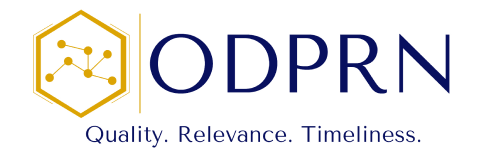The ODPRN has completed a drug class review of low molecular weight heparin (LMWH). The final reports, summary of the research findings and reimbursement option recommendations are available below:
Final Reports and Reimbursement Options
- Consolidated Final Report and Reimbursement Option Recommendations
- LMWH Pharmacoepidemiology Report
- LMWH Pharmacoeconomics Report
- LMWH Environmental Scan Report
- LMWH Systematic Review Report
- LMWH Qualitative Report
- LMWH Citizen’s Panel Report
Click to view the complete infographic
Summary of Drug Class Review Findings: Low Molecular Weight Heparin
Download a PDF of this Research Summary
The Ontario Drug Policy Research Network (ODPRN) conducted a drug class review on the on the recommended use and accessibility of low-molecular-weight heparins (LMWHs). LMWHs are blood thinners (anticoagulants) which are used for the prevention and treatment of blood clots (venous thromboembolism (or VTE)) in various populations.
In Canada, there are four LMWHs commercially available: dalteparin, enoxaparin, nadroparin and tinzaparin. Fondaparinux, a synthetic heparin-like compound, is also available. Their listing varies and they are indicated for use in a broad range of patients
Background
There are several key reasons for reviewing this process. First, there is confusion amongst prescribers about the many indications and variable listing (i.e., Limited Use or Exceptional Access Program). Second, due to this mixed LU/EAP listing, there is a potential for inappropriate use of the LU codes to gain access for other indications. Third, prescribers have also requested that new indications be listed to align with current clinical guidelines. Finally, several of the indications are listed under EAP and this could potentially be burdensome for prescribers.
What did we find?
Accessibility
All LMWHs are available on the ODB formulary, either listed as LU or through EAP’s telephone request service. In contrast to most EAP requests that may take weeks to process, this service provides real-time approval during regular business hours. However, many clinicians are unfamiliar with accessibility of LMWH through EAP, and are only aware of the Limited Use listing. As well, some indications for LMWHs (e.g., post-operative prophylaxis in non-orthopaedic surgical patients) are not accessible through the ODB formulary or EAP.
Utilization
Most patients begin treatment with LMWHs in a hospital setting and need to continue treatment after they are discharged. The median time to discontinuation across all LMWH users was 30 days or less, although some indications (e.g., cancer patients) had longer durations of use.
The majority of LMWH users are treated with dalteparin, but there has been a decrease in its market share from 62% (6,300 users) in 2004 to 44% (10,791 users) in 2014. Enoxaparin is the second most commonly used LMWH with 41% of the market share (10,140 users).
There is also an issue with the current Limited Use codes, as they appear to be used inappropriately in some patients in order to obtain access to publicly-funded LMWH.
Cost
The overall cost for LMWHs reimbursed through the OPDP program in 2014 was $33.7 million. Ontario has seen a 143% increase in the number of publicly-funded users over 10 years (10,121 users in 2004 to 24,584 users in 2014).
Our economic model for treatment of patients with cancer who develop a blood clot showed that LMWHs are not cost-effective compared to warfarin. However, this result is difficult to interpret as cost-effectiveness data for other indications is lacking.
Recommendations for consideration
Based on clinical guidelines for use of LMWHs and increased accessibility, albeit with a possible increase in costs, Limited Use for all LMWHs and fondaparinux is recommended with simplified codes for six streamlined options based on patient population:
- Acute treatment of VTE in non-cancer patients
- Acute treatment and secondary prophylaxis for VTE in patients with cancer
- Treatment and prophylaxis of VTE in pregnant or lactating females
- Post-operative prophylaxis of VTE for patients undergoing surgery of lower limbs
- Post-operative prophylaxis of VTE for patients undergoing non-orthopaedic surgery and who are at high risk of thromboembolic complications
- Peri-operative bridging for patients who require long-term warfarin therapy
Other considerations
- LMWH use in pediatrics:
- The pediatric population is unique, and an additional review of LMWHs in pediatrics is warranted.
- Price negotiations:
- LMWHs were not shown to be cost-effective at currently listed prices for extended treatment of VTE in patients with cancer. However, with a reduction in price of approximately 91%, they would become a cost-effective option.
- EAP for fondaparinux for patients with cancer-associated thrombosis and heparin-induced thrombocytopenia (HIT) or in pregnant females with history of HIT:
- Although fondaparinux has not been studied in patients with cancer-associated thrombosis, guidelines suggest that fondaparinux is an option for patients with a history of HIT in this population. Additionally, fondaparinux has been used during pregnancy in patients with history of HIT.
How did we conduct our studies?
The ODPRN conducted a drug class review consisting of multiple studies: a qualitative study to determine the experiences of use and prescribing; a systematic review to summarize clinical recommendations for the use of these drugs; a pharmacoepidemiological analysis to determine patterns of use in Ontario and across Canada; an environmental scan to determine public drug coverage; and pharmacoeconomic analyses to determine the cost-effectiveness for LMWHs.
Final Comprehensive Research Plan
- LMWH Comprehensive Research Plan Overview
- LMWH Pharmacoepidemiology CRP
- LMWH Pharmacoeconomics CRP
- LMWH Environmental Scan CRP
- LMWH Systematic Review CRP
- LMWH Qualitative CRP
Stakeholder Feedback
- Comments from stakeholders on draft Reimbursement Option Recommendations
- Comments from stakeholders on draft Comprehensive Research Plan
Any questions? Contact us at info@odprn.ca.
